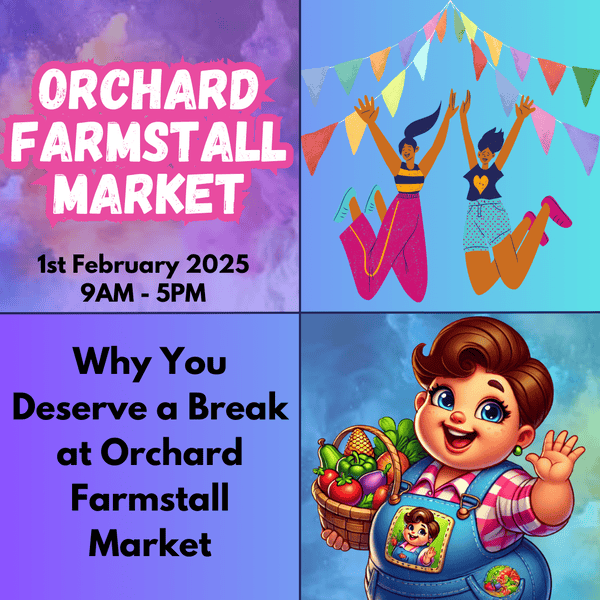
Standing Out at a Market
November 20, 2024
Orchard Farmstall Market
December 3, 2024Behind the Scenes
Farmers markets bring communities together, offering fresh, local produce, handmade goods, and a lively atmosphere. But behind the scenes, organizing one is a blend of creativity, planning, and teamwork. Here’s a look at what it takes to make a farmers market thrive.
1. Finding the Perfect Venue
The venue is the heartbeat of any farmers market. It must be accessible, spacious, and welcoming for vendors and visitors alike. Organizers scout locations that have:
- Ample parking for shoppers and vendors.
- Good foot traffic to attract locals.
- Utilities and amenities like restrooms and electricity.
Once the spot is secured, permits and approvals are obtained to ensure compliance with local regulations.
2. Designing Eye-Catching Artwork
Visual branding sets the tone for the event. Designers craft:
- A vibrant logo and theme reflecting the community’s spirit.
- Flyers, posters, and social media graphics to grab attention.
- Vendor signage to create a cohesive look during the event.
Colors, fonts, and imagery work together to create a sense of excitement while staying true to the market’s purpose.
3. Marketing the Market
Getting the word out is critical to the market’s success. A multi-channel marketing approach ensures a broad reach:
- Social media campaigns featuring vendor highlights, giveaways, and event reminders.
- Local partnerships with schools, libraries, and community centers to distribute promotional materials.
- Press releases sent to newspapers, radio stations, and blogs for extra exposure.
Word-of-mouth is equally powerful, so organizers encourage vendors and visitors to share details with friends and family.
4. Securing Sponsors and Partners
Sponsorships offset costs and add value to the market. Businesses love to partner with markets because it:
- Strengthens community ties.
- Provides visibility among local audiences.
Sponsors may contribute funds, services, or products in exchange for advertising space or mentions in event materials.
5. Vendor Coordination
Organizing vendors is like assembling a puzzle, ensuring a mix of offerings such as:
- Fresh produce
- Handmade crafts
- Baked goods
- Artisanal products
Applications are reviewed to maintain quality and diversity. Organizers also provide guidelines on booth setup, fees, and schedules to keep things running smoothly.
6. Logistics and Operations
No detail is too small when it comes to logistics. Organizers plan:
- Booth layouts to maximize flow and visibility.
- Waste management to keep the venue clean.
- Parking and security to ensure a safe and enjoyable experience.
Backup plans for bad weather or unforeseen circumstances are essential to avoid last-minute chaos.
7. Creating a Memorable Experience
It’s not just a market—it’s an event. Organizers aim to include:
- Live music or entertainment to enhance the vibe.
- Workshops or demos like cooking classes or gardening tips.
- Kids’ activities to make it family-friendly.
These additions keep visitors engaged and encourage them to stay longer.
8. Post-Market Reflection
The work doesn’t stop once the booths are packed up. Organizers review what worked and what didn’t, gathering feedback from:
- Vendors on sales and setup.
- Visitors on their overall experience.
- Sponsors on their visibility and satisfaction.
These insights help improve future events, making them even more successful.
Final Thoughts
Organizing a farmers market is no small feat, but the rewards are immeasurable. It fosters connections, supports local businesses, and creates a space where everyone can thrive. Whether you’re planning one or simply attending, remember the effort and passion that go into making it happen. #EventPlanning #FarmToTable #MarketDay #SupportLocal #FreshProduce #OrchardFarmstallMarket




